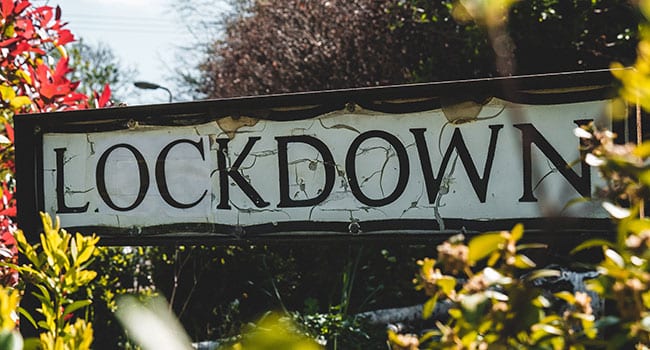 After being locked down since March 16, Canadians are emerging, as if after a hurricane, to assess the damage that has occurred in just 12 weeks.
After being locked down since March 16, Canadians are emerging, as if after a hurricane, to assess the damage that has occurred in just 12 weeks.
The main victims are, of course, the patients and valiant front-line workers who have succumbed to COVID-19.
But shutting down the economy has ravaged businesses, jobs and savings, while the prime minister’s spending announcements from the front steps of Rideau Cottage added more than $20 billion a week to our national debt.
With the benefit of hindsight, let us examine some vital questions.
Was confining much of the working-age population the right decision?
According to Public Health Agency of Canada data, there have been 7,994 COVID-19 deaths as of June 11. Federal chief medical officer Theresa Tam says that 81 per cent of deaths were linked to long-term care facilities. Of the remaining 1,519 deaths, most were of people over the age of 70.
Only 232 deaths were of people younger than 60, almost all of whom had pre-existing health conditions.
For a healthy working-age person, the risk of dying from COVID-19 is significantly lower than dying by accident or from other diseases.
Would allowing young, healthy people to keep to working have posed an increased risk to the general population?
Experience in B.C. says not. The province had the longest list of permitted services by far, including construction, road-paving, manufacturing, skilled trades and even commercial gardening. And yet B.C. has had only three COVID-19 deaths per 100,000 population, compared with a nationwide average of 21 per 100,000.
If working-age people in other provinces hadn’t been removed from the workforce, we would have experienced fewer job losses, bankruptcies and social harm, including declining mental health, suicides and family violence. And there would have been less need for crippling increases in our national debt.
In hindsight, letting healthy working-age people go to work would have prevented much of that damage.
Did the shutdown of surgical wards cost more lives than were saved?
These shutdowns, to help hospitals prepare for a flood of COVID-19 victims, came as Canadians were already suffering long waitlists. A December 2019 Fraser Institute report found waitlists averaging 20 weeks and totaling more than a million people.
But when COVID-19 hit, cancer, cardiac and other patients who had finally been given a surgical date were sent notices of indefinite postponement. Knowing a tumour continues to grow or a blocked artery might cause a heart attack adds mental anguish to increased medical risk.
Now, three months later, no one knows how much longer the waits will be. B.C., one of the first provinces to reopen surgical wards, has said it may take two years to work through 30,000 cancelled surgeries.
Preparing for the possibility that hospitals could become overwhelmed by COVID-19 victims was a prudent decision. The problem is that our medical system went into the crisis with zero unused capacity and the longest waitlists among Organization for Economic Co-operation and Development (OECD) countries.
Did Sweden get it right?
Sweden adopted a no-lockdown policy that Norway’s state epidemiologist criticized as “going against the whole world.” And Sweden has seen a relatively high death rate compared to its Scandinavian neighbours, though below that of locked-down Britain, Spain, Italy and Belgium, and about the same as France.
Quebec, with two million fewer inhabitants, has had more deaths.
Swedish state epidemiologist Anders Tegnell’s recent comment that Sweden “should have done more to stop the virus” was widely interpreted as a repudiation of his own policy, but it’s now clear he was referring to elder-care facilities, where most of the deaths have occurred.
In an interview last week with Swedish Radio, he said: “There has been news that I believe the strategy was wrong. We still believe the strategy is good, you can always get better at this work.”
A continuing decline in deaths per day over the past few weeks supports what I’ll call his single big wave strategy.
How was Sweden’s policy different?
Swedes were encouraged to work from home, follow good personal hygiene and practise physical distancing. They were also instructed to self-isolate if unwell. The elderly and immune-compromised were advised to stay home.
Universities were closed but schools for children under 16 remained open. Shops, daycares, bars, restaurants and gyms also remained open. Gatherings were limited to 50 people.
These measures are virtually the same as are planned for the phased reopening of our economy.
And that raises a crucial point. Epidemiologists warn that “the virus is still out there.” But with relatively few Canadians having gained immunity by contracting it, there’s no reason for our susceptibility to be any different than it was before the shutdowns.
While Sweden is taking the hit in one painfully high curve, flattening our curve virtually assures a post-shutdown COVID-19 resurgence of unknown severity.
As governments make plans to minimize deaths from the second wave, protection of the elderly and immune-compromised should be their top priority.
For other people, though, it now seems clear that suicides, the impacts of diseases left untreated, family violence, bankruptcies, chronic unemployment and even the long-term consequences of greater public debt need to be given much higher priority than they were in dealing with wave number one.
Gwyn Morgan is a retired Canadian business leader who has been a director of five global corporations.
Gwyn is a Troy Media Thought Leader. Why aren’t you?
The views, opinions and positions expressed by columnists and contributors are the author’s alone. They do not inherently or expressly reflect the views, opinions and/or positions of our publication.


